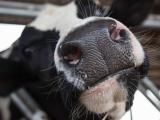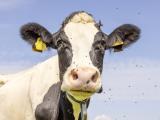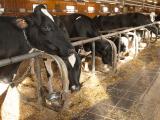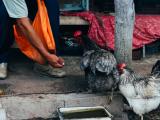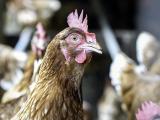Apr 16, 2013 (CIDRAP News) – The eastern China epicenter of the H7N9 avian flu outbreak reported 14 new cases today, along with two more deaths, moving the total to 78 cases, 16 of them fatal.
Most of the patients are adults over age 50 who are hospitalized in critical or serious condition, though two are younger adults, one is a child, and two apparently recovered. Some of the newly reported cases involve patients from Shanghai who were sick in March but whose H7N9 infections weren't confirmed until recently.
Eight of the cases were included in the daily update from Hong Kong's Centre for Health Protection (CHP), which gets its information from official mainland sources. They include three patients from Jiangsu province, men ages 56 and 72 and a 21-year-old woman. The older of the two men is in critical condition, while the other two patients are in serious condition.
Five of the cases included in today's CHP update are from Zhejiang province. Two of the patients are women ages 58 and 72 and three are men ages 56, 57, and 62. All of them are hospitalized in critical condition.
Details about illness onsets and possible virus exposure were available for some of the patients. For the Zhejiang province patients, illness onsets ranged from Apr 10 through Apr 12. A report from Xinhua, China's state news agency, said the 56-year-old patient from Zhejiang raised and sold pigeons.
The other six cases and two deaths reported today were from the city of Shanghai, which announced the cases in a health bureau bulletin in Chinese that was machine-translated by analysts at Avian Flu Diary blog and the FluTrackers infectious-disease message board. Later the bulletin was mentioned in a separate report from Xinhua.
One of the cases was recently diagnosed, and others, including the deaths, involved patients who got sick in March, according to a former resident of China who works as a scientist in the United States and translated the Shanghai health bureau report for CIDRAP News. The newly confirmed case is in a 47-year-old man who started having symptoms on Apr 10; local disease control officials confirmed his H7N9 infection yesterday.
Four other patients got sick in late March, and their samples were sent to the Chinese Center for Disease Control in Beijing. Two of the patients died and two recovered. Their age, gender, and illness onset weren't mentioned in the report, which was also unclear about what testing methods were used to confirm the H7N9 findings.
The sixth case-patient reported by Shanghai officials is a child younger than 10 who got sick while traveling in Hunan with his or her parents and was sampled on Mar 17. A test for the H7N9 virus wasn't available when the child was tested, and the youngster traveled back to Shanghai on Mar 19 while still sick. It's not clear from the report if he or she was exposed to the virus in Hunan or Shanghai. The child has recovered, and none of the contacts have tested positive for the virus.
Global health officials have said they expect human H7N9 cases to continue until the animal source of the virus—probably poultry—is pinpointed and authorities institute measures to protect humans from exposure.
The World Health Organization (WHO) confirmed the three new infections and one death that China reported yesterday and said more than 1,000 close contacts of the cases reported so far are being monitored. So far there is no evidence of ongoing person-to-person transmission, it said.
Chinese health officials announced today that patients sick with the H7N9 virus in rural areas will be reimbursed for the cost of antiviral drugs and treatment, Xinhua reported. A notice from the National Health and Family Planning Commission said the payments will be come through the new rural cooperative medical system. The agency also urged all health departments to support treatment and prevention of the infection and that treatment shouldn't be delayed or withheld for lack of funds.
In a related development today, China's agriculture ministry reported more H7N9 findings in birds, according to a report from the World Organization for Animal Health (OIE). The virus was detected in a total of four chickens from two different live bird markets in Huzhou in Zhejiang province.
H7N9 was also found in a wild pigeon from the city of Nanjing in Jiangsu province. Earlier reports of the virus in pigeons were in birds sold for consumption in markets.
The WHO issued a notice today that it, the OIE, and the United Nations Food and Agriculture Organization (FAO) have agreed on terminology for the new virus detected in China. It said "avian influenza A (H7N9) virus" will be used in scientific, technical, and other reports. For news and social media reports, it said "H7N9" or "H7N9 virus" can also be used.
The novel H7N9 strain circulating in China is a reassortant of three different avian influenza viruses, and the new terminology appears to sidestep some of the thorny issues related to putting a country's name in the virus name.
See also:
Apr 16 CHP statement
Apr 16 Xinhua story
Apr 16 Xinhua story on new Jiangsu and Zhejiang cases
Apr 16 Xinhua story on rural H7H9 funding
Apr 16 OIE statement
Apr 16 WHO update
Apr 16 WHO statement on H7N9 terminology
